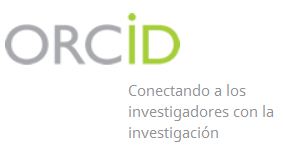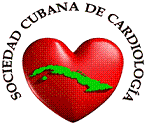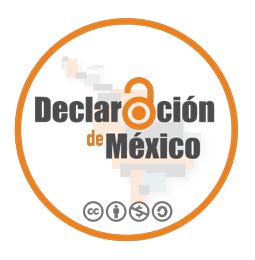Ruta crítica en el seguimiento por cardiología del paciente pediátrico con enfermedad oncológica activa
Texto completo:
PDFResumen
La concepción de terapias curativas aplicadas a niños con cáncer presenta considerables logros. La cardio – oncología es una nueva disciplina horizontal dedicada al diagnóstico y tratamiento de las enfermedades cardiovasculares inducidas por el tratamiento oncológico; sin embargo, surgen interrogantes relacionadas con las estrategias a desarrollar en el paciente pediátrico durante el momento de actividad tumoral con independencia de la recepción terapéutica.
La cardio – oncología pediátrica se particulariza respecto a su contraparte en el adulto mediante diferencias relacionadas con las entidades onco – hematológicas que enfrenta, las co – morbilidades sistémicas y cardiovasculares identificadas, las aproximaciones medicamentosas aplicadas, la caracterización del miocardio en el niño y las respuestas del organismo ante el tratamiento. La adopción de estrategias de seguimiento destinadas a pacientes pediátricos en actividad tumoral precisa del enfoque multidisciplinario dedicado a la monitorización cardiovascular desde la etapa previa al tratamiento.
El análisis de cada uno de los detalles y peculiaridades inherentes a la mencionada modalidad de monitoreo establece su ruta crítica que se sustenta en la prevención sistemática, la estratificación de riesgo en conjunción al diagnóstico precoz de cardiotoxicidad y la medicación protectora del sistema cardiovascular.Palabras clave
Referencias
Referencias bibliográficas
López – Fernández T, Martín García A, Santaballa Beltrán A, Montero LA, García Sanz R, Mazón Ramos P. Cardio – Onco – Hematología en la práctica clínica. Documento de consenso y recomendaciones. Rev Esp Cardiol. 2017; 70:474 – 86.
Miller KD, Siegel RL, Lin CC. Cancer treatment and survivorship statistics. CA Cancer J Clin. 2016; 66:271 – 89.
Jain D, Russell RR, Schwartz RG, Panjrath GS, Aronow W. Cardiac complications of cancer therapy: pathophysiology, identification, prevention, treatment, and future directions. Curr Cardiol Rep. 2017; 19:36 – 9.
Xinqiang H, Zhou Y, Liu W. Precision cardio – oncology: understanding the cardiotoxicity of cancer therapy. npj Precision Oncology. 2017; 31:1 – 11.
Herrmann J, Lerman A, Sandhu NP. Evaluation and management of patients with heart disease and cancer: cardio – oncology. Mayo Clin Proc. 2014; 89:1287–1306.
Nhola LF, Villarraga HR. Rationale for Cardio - Oncology Units. Rev Esp Cardiol. 2017; 70:583 – 89.
Ryan TD, Nagarajan R, Godow J. Pediatric Cardio – Oncology: Development of Cancer Treatment – Related Cardiotoxicity and the Therapeutic Approach to Affected Patients. Curr. Treat. Options in Oncol. 2019; 20: 56 – 63.
Chow EJ, Leger KJ, Bhatt NS, Mulrooney DA, Ross CJ. Paediatric cardio – oncology: epidemiology, screening, prevention, and treatment. Cardiovascular Research. 2019; 115: 922 – 34.
Getz KD, Sung L, Ky B, Gerbing RB, Leger KJ, Leahy AB, Sack L. Occurrence of treatment – related cardiotoxicity and its impact on outcomes among children treated in the AAML0531 clinical trial: a report from the Children’s Oncology Group. J Clin Oncol. 2019; 37:12 – 21.
Lipshultz SE, Adams MJ, Colan SD. Long – term cardiovascular toxicity in children, adolescents, and young adults who receive cancer therapy: pathophysiology, course, monitoring, management, prevention, and research directions: a scientific statement from the American Heart Association. Circulation. 2013; 128:1927 – 95.
Ganame J, Claus P, Uyttebroeck A. Myocardial dysfunction late after low – dose anthracycline treatment in asymptomatic pediatric patients. J Am Soc Echocardiogr. 2007; 20:1351 – 8.
Armenian SH, Lacchetti C, Barac A. Prevention and monitoring of cardiac dysfunction in survivors of adult cancers: American Society of Clinical Oncology Clinical Practice Guideline. J Clin Oncol. 2017; 35:893 – 1.
Barry E, Alvarez JA, Scully RE, Miller TL, Lipshultz SE. Anthracycline – induced cardiotoxicity: course, pathophysiology, prevention and management. Expert Opin Pharmacother. 2007; 8:1039 – 58.
Bloom MW, Hamo CE, Cardinale D. Cancer therapy – related cardiac dysfunction and heart failure: part 1: definitions, pathophysiology, risk factors, and imaging. Circ Heart Fail. 2016; 9:e002661.
Van Dalen EC, Van der Pal HJ, Kremer LC. Different dosage schedules for reducing cardiotoxicity in people with cancer receiving anthracycline chemotherapy. Cochrane Database Syst Rev. 2016; 3:CD005008.
Zamorano JL, Lancellotti P, Rodriguez Muñoz D. 2016 ESC Position Paper on cancer treatments and cardiovascular toxicity developed under the auspices of the ESC Committee for Practice Guidelines: The Task Force for cancer treatments and cardiovascular toxicity of the European Society of Cardiology (ESC). Eur Heart J. 2016; 37:2768 – 801
Armenian SH, Hudson MM, Chen MH. Rationale and design of the Children’s Oncology Group (COG) study ALTE1621: a randomized, placebo – controlled trial to determine if low – dose carvedilol can prevent anthracycline – related left ventricular remodeling in childhood cancer survivors at high risk for developing heart failure. BMC Cardiovasc Disord. 2016; 16:187 – 9.
Planas JC, Galderisi M, Barac A, Ewer MS, Ky B, Scherrer – Crosbie M. Expert consensus for multimodality imaging evaluation of adult patients during and after cancer therapy: a report from American Society of Echocardiography and the European Association of Cardiovascular imaging. European Heart Journal – Cardiovascular Imaging. 2014; 15:1063 – 93.
Bossi G, Lanzarini L, Laudisa ML, Klersy C, Raisaro A, Aric M. Echocardiographic evaluation of patients cured of childhood cancer: a single center study of 117 subjects who received anthracyclines. Medical and Pediatric Oncology. 2001; 36:593 – 600.
Chang HM, Moudgil R, Scarabelli. Cardiovascular Complications of Cancer Therapy Best Practices in Diagnosis, Prevention, and Management: Part 1. J Am Coll Cardiol. 2017; 70:2536 – 51.
Kenigsberg B, Wellstein A, Barac A. Left Ventricular Dysfunction in Cancer Treatment. Is it Relevant ? J Am Coll Cardiol. 2018; 6: 87 – 95.
Ponikowski P, Voors AA, Anker SD. Guidelines for the diagnosis and treatment of acute and chronic heart failure European Heart Journal. 2016; 37, 2129 – 2200.
Bristow MR, Mason JW, Billingham ME, Daniels JR. Doxorubicin cardiomyopathy: evaluation by phonocardiography, endomyocardial biopsy, and cardiac catheterization. Ann Intern Med. 1978; 88:168 – 75.
Cardinale D, Colombo A, Bacchiani G. Early detection of anthracycline cardiotoxicity and improvement with heart failure therapy. Circulation. 2015; 131:1981 – 1988.
Gibson TM, Mostoufi – Moab S, Stratton KL, Barnea D, Chow EJ, Donaldson SS, Howell RM et al. Temporal patterns in the risk of chronic health conditions among survivors of childhood cancer diagnosed 1970 – 1999: a report from the Childhood Cancer Survivor Study. Lancet Oncol. 2018; 19:1590 – 1601.
Tilemann LM, Heckmann MB, Katus HA, Lehmann LH, Muller OJ. Cardio – oncology: conflicting priorities of anticancer treatment and cardiovascular outcome. Clinical Research in Cardiology. 2018; 107:271 – 80.
Teskle AJ, Linschoten M, Kamphuis JAM. Cardio – oncology: an overview on outpatient management and future developments. Neth Heart J. 2018; 26:521 – 32.
Fisher RS, Rausch JR, Ferrante AC. Trajectories of health behaviors across early childhood cancer survivorship. Psychooncology. 2019; 28:68 – 75.
Albini A, Pennesi G, Donatelli F, Cammarota R, De Flora S. Cardiotoxicity of anticancer drugs: the need for cardio – oncology and cardio – oncological prevention. J Natl Cancer Inst. 2010; 102:14 – 25.
Chung WB, Youn HJ. Pathophisiology and preventive strategies of antracycline – induced cardiotoxicity. Korean J Intern Med. 2016; 31:625 – 33.
Vincent DT, Ibrahim YF, Espey MG, Suzuki YJ, The role of antioxidants in the era of cardio – oncology. Cancer Chemother Pharmacol. 2013; 72:1157 – 68.
Lipshultz SE, Sambatakos P, Maguire M, Karnik R. Cardiotoxicity and cardioprotection in childhood cancer. Acta Haematol. 2014; 132:391 – 9.
Schwartz CL, Wexler LH, Krailo MD. Intensified chemotherapy with dexrazoxane cardioprotection in newly diagnosed nonmetastatic osteosarcoma: a report from the Children’s Oncology Group. Pediatr Blood Cancer. 2016; 63:54 – 61.
Stefani L, Pedrizzetti G, Galanti G. Clinical Application of 2D speckle tracking strain for assessing cardiotoxicity in Oncology. J Funct Morphol Kinesiol. 2016; 1:343 – 54.
Tadic M, Genger M, Cuspidi C, Belyavskiy E. Phasic left atrial function in cancer patients before initiation of anticancer therapy. J Clin Med. 2019; 8:421 – 8.
Jiménez – Cotes EA, Meyer – Martínez WS, Gallego – González D. Biomarcadores en la detección temprana de Cardiotoxicidad Inducida por quimioterapia; estado actual. Arch Med (Manizales). 2015; 15:126 – 37.
Jarfelt M, Kujacic V, Holmgren D, Bjarnason R, Lannering B. Exercise echocardi¬ography reveals sub – clinical cardiac dysfunction in young adult survivors of child¬hood acute lymphoblastic leukemia. Pediatr Blood Cancer. 2007; 49:835 – 40.
Sheng CC, Amiri – Kordestani L, Palmby T, Force T. 21ST. century cardio – oncology. Identifying cardiac safety signals in the era of personalized medicine. J Am Coll Cardiol. Basic Trans Science. 2016; 1:386 – 98.
Kostakou PM, Kouris NT, Kostopoulos VS, Damaskos DS, Olympios CD. Cardio – oncology: a new and developing sector of research and therapy in the field of cardiology. Heart Fail Rev. 2019; 24:91 – 100.
Enlaces refback
- No hay ningún enlace refback.
Copyright (c) 2020 Adel Eladio González Morejón

Esta obra está bajo una licencia de Creative Commons Reconocimiento-NoComercial 4.0 Internacional.












